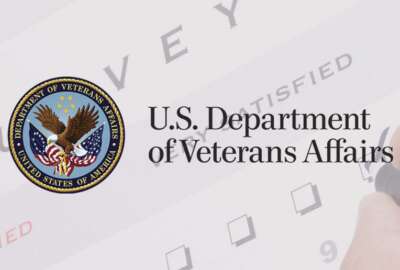Agencies are beginning to look at the executive core qualifications (ECQs), the defined set of requirements that the Office of Personnel Management has deemed as critical skills to enter the Senior Executive Service, and see more room to get creative.
The Department of Veterans Affairs is building out its own leadership development framework, which it first initiated two years ago, to evolve and grow its corps of emerging and existing managers and executives.
The framework, which top VA leaders recently approved, uses those ECQs as a model and a foundation. But it’s tailored to the department’s specific mission and goals — and acknowledges a premise that the federal government hasn’t often recognized.
“You can be a leader at any place where you are,” Rhonda Carter, VA’s associate director for experienced based development, said Thursday at the Association for Talent Development’s Government Workforce Summit in Washington. “No matter where you sit in the organization you are a leader, so we want to make sure we develop those leadership skills.”
But VA’s framework acknowledges five “tiers” of leaders: emerging leaders, team leaders, first-line supervisors, managers and senior leaders. And it builds a path for employees to first enhance their technical skills and then later develop leadership skills as they advance in their professional careers, Carter said.
“We got senior leaders and chief learning officers in the room, and we looked at what was going on in the department, how we could improve our services and how we could make sure that we connected our mission with what we do in the department for developing leaders,” she said.
The department is exploring what specific corporate, competitive development opportunities it can map out for its leadership corps, and Carter said a working group will seek out specific training and educational courses.
The framework ties back to VA’s “I CARE” values — integrity, commitment, accountability, respect and excellence — she added.
A new talent development council, which VA stood up last month, will build out the leadership model with further policies and guidance. The council, for example, is writing an expectation message for VA leaders, which the secretary will eventually approve.
OPM, like VA, is developing its own leadership and professional development journey map, which the agency-run Center for Leadership Development and Federal Executive Institute will eventually use as a model.
The model maps to three leadership tiers — the supervisor, manager and federal executive — and acknowledges that agencies haven’t always had the tools or the foresight to develop leadership qualities before employees take on these roles.
“There is a requirement for supervisory development when one becomes a supervisor within the executive branch,” Suzanne Logan, deputy associate director of the Center for Leadership Development and director of the Federal Executive Institute, said. “But there’s not a requirement for them to learn to be a supervisor before they get there. That, I think, is what we’re missing.”
OPM’s leadership model sets emerging and existing leaders on a path to develop “human performance,” which includes topics on wellness, mindfulness, as well as more recent tracks on evidence-based decision-making, artificial intelligence and human-centered design, Logan said.
But the model also sets leaders on a path to enhance their professional and leadership development.
“The vast majority of your time is spent working with people, handling people issues, taking care of your people and supporting them,” Logan said. “That’s the plan and that’s what we’re working on in order to do that.”
Both OPM and VA said they see their leadership development models and frameworks as an opportunity to set out a specific journey path for emerging supervisors and managers to become lifelong learners — wherever they are on the General Schedule.
“You’re really going to develop your … capabilities only at about 30% within a formal structure,” Logan said. “However, 70% of the time when you’re back in your workplace and working on what your assignments are and with the people that are there, that is a very ripe opportunity for that learning to occur in a better way.”
Copyright
© 2024 Federal News Network. All rights reserved. This website is not intended for users located within the European Economic Area.

